New World quail facts for kids
Quick facts for kids New World quail |
|
|---|---|
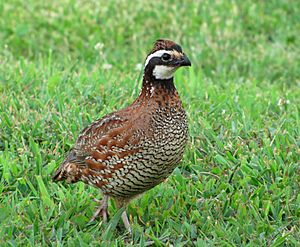 |
|
| A Northern bobwhite | |
| Scientific classification |
|
| Kingdom: | Animalia |
| Phylum: | Chordata |
| Class: | Aves |
| Order: | Galliformes |
| Superfamily: | Phasianoidea |
| Family: | Odontophoridae Gould, 1844 |
| Genera | |
|
|
The New World quails are small, interesting birds. They look a bit like the quails found in other parts of the world, but they are actually from a different bird family. These American birds belong to their own family called the Odontophoridae. Quails from the "Old World" (like Europe and Asia) are part of the pheasant family.
You can find New World quails all the way from Canada down to southern Brazil. Two types, the California quail and the Northern bobwhite, have even been brought to New Zealand. Some quails, like the stone partridge and Nahan's partridge, live in Africa but are also part of this family. These birds live in many different places, from warm rainforests to dry deserts. However, most of them can't survive in very cold weather. There are 34 different kinds of New World quails, grouped into 10 main types (called genera).
Most New World quails have short, strong legs. Some even have very thick legs that help them dig. Unlike many other birds in their group, they don't have sharp spurs on their legs. Even though they can fly quickly for short distances, these quails usually prefer to walk or run away from danger. They only fly off super fast if they have no other choice. Their feathers can be plain or very colorful. Many species have cool crests or plumes (fancy feathers) on their heads. Male quails often have brighter feathers than females.
Contents
Life and Habits of New World Quails
New World quails are shy birds that are active during the day. They usually live on the ground. Even "tree quails," which sleep in tall trees, mostly find their food on the ground. They eat a variety of things, including insects, seeds, plants, and roots. Quails living in deserts especially like to eat seeds.
Reproduction and Family Life
Most of what we know about how New World quails raise their young comes from studies of birds in North America. These birds are generally believed to have one partner for life (they are monogamous). They build their nests right on the ground.
Quails lay many eggs, which is common for birds in their family. Tree quails and wood quails lay about three to six eggs. The northern bobwhite can lay as many as 10 to 15 eggs! The eggs hatch after 16 to 30 days, depending on the type of quail. Baby quails are born ready to move around. They leave the nest quickly and stay with their parents in big family groups.
Quails and People
The Northern bobwhite and California quail are popular gamebirds, meaning people hunt them for sport. To make sure there are enough of these birds, their numbers have been increased in some areas. This means they are not currently in danger of disappearing.
However, some other quail species are facing threats from human activities. For example, the bearded tree quail in Mexico is losing its home because of habitat loss. It is also sometimes hunted illegally.
Types of New World Quails
Here are some of the different types of New World quails:
| Subfamily | Image | Genus | Species |
|---|---|---|---|
| Ptilopachinae |  |
Ptilopachus |
|
| Odontophorinae (New World quails) | Rhynchortyx |
|
|
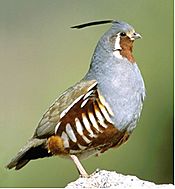 |
Oreortyx |
|
|
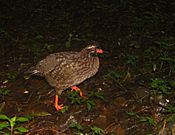 |
Dendrortyx |
|
|
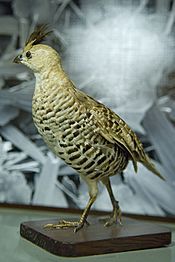 |
Philortyx |
|
|
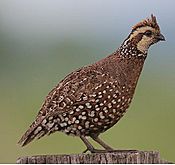 |
Colinus (Bobwhites) |
|
|
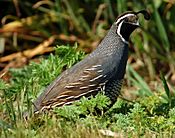 |
Callipepla (Crested quails) |
|
|
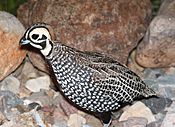 |
Cyrtonyx |
|
|
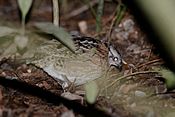 |
Dactylortyx |
|
|
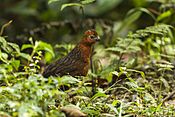 |
Odontophorus (wood quails) |
|
See also
 In Spanish: Codornices del Nuevo Mundo para niños
In Spanish: Codornices del Nuevo Mundo para niños

